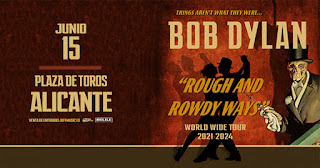Since 2009 it's supposed to have been possible to stop these people pestering you by signing up to the Lista Robinson, the Robinson list. I did and it seems reasonably effective but I've heard that, for some call centres, the Robinson list is just another database to plunder. At the end of June 2023 new legislation came into force which is supposed to make it more difficult for these cold callers to keep on pestering us. The general consensus is that the legislation is so full of holes that it won't change anything. Oh, and by the way if you're registered as a business or as self employed the new legislation doesn't cover you. Business cold calling to business is considered legitimate.
The first reason the new legislation is likely to fail is that it doesn't apply if you have given your consent for companies to call you. Not many of us think we give consent but just how often do you read the fine print on that Internet contract or new phone app before you tick the little box? That's where the clause is that gives them permission to call us or even to sell our data on to a third party. And it's often Catch 22; if you don't give your consent then you can't have whatever service is on offer.
The second reason is that the new legislation allows the companies, which have your number, to call you when there is a legitimate interest. What exactly legitimate interest means depends on how much wiggle room a company thinks there is in the legislation. Security, for instance, is a legitimate interest. The company says that it needs to contact you because they are worried that, with a new scam, your account is at risk. So, your bank phones to say that you don't have a backup, just in case of a security breach, phone number. Oh, and while we're on the phone, talking about security, have you ever considered the advantages of our new super gold plus security plan?
But the biggest problem is that the legislation is Spanish and European, not worldwide. The Spanish Data Protection Agency (AEPD) tells Spanish firms it's illegal to use randomly generated phone numbers for cold calling. The AEPD says telemarketing companies are obliged to identify themselves, say that they are trying to sell you something and tell you you can ask to stop receiving calls if you ask. Calls must be recorded so that the recording can be used as proof that the call complied with the law. The fines for not following the protocol can be up to a couple of million euros.
So if some advertiser makes a call from Spain and they don't follow the rules they can get into hot water. But Morocco, Ecuador (and lots of other countries) are not in the European Union. So, a Spanish firm hires a call centre, based in Ecuador or Uruguay, to make the calls on their behalf. Even if the phone number that's shown on your mobile looks like a Spanish one it's quite likely it's not. Nobody in Spain makes the call. The Spanish Consumers Association tried, in March 2022, to identify 210 cold call telephone numbers and they only tracked down about a third of them. It's difficult to chase someone for being naughty if you can't find them.
Cold calling produces a lot of business. We're often a bit fed up with our current phone provider or we wonder if another electric contract wouldn't save us money. If we let the cold caller speak and the deal on the phone sounds good, well, why not? The companies realise that stopping cold calling, obeying the new legislation, could cause a big drop in profits.
The new rules say that the Spanish companies have to behave legally and so they do. The Spanish company signs a contract with, say, a Nicaraguan call centre which stresses that the Nicaraguans will comply with European and Spanish rules when making calls to Spain. The contract is signed in that "foreign" country and it clearly states that the call centre can only call people who have expressly consented to receive calls or where there is a legitimate concern. What doesn't go into the contract is that the call centre and the Spanish company agree, while they're having a cuba libre down the bar, that the call centre can call whoever they want.
Back in Spain, where nobody drinks cuba libres till late at night, Pedro or Pepe, Mariló or Susan complains to the AEPD about unsolicited calls. Maybe the case ends up in court. Let's pretend that this process happens almost instantly and doesn't drag on for years. The telephone company defends itself by showing the contract and saying how disappointed and cross it is with the overseas company for breaching its contract. The AEPD or the judge will not be able to do much to the phone company because any contracts that the phone companies have with the call centres say that they guarantee to only make legitimate calls. The judge can't do much about an Ecuadorian or Peruvian contract because they are outside their jurisdiction. And if the complaints keep coming and the judges begin to suspect some skulduggery then the phone company will throw their hands up in horror and break the call centre contract for not complying with the terms of the agreement. There are lots of call centres looking for business. There may be penalties for breaking contracts, there may even be fines within the EU but the profits will outweigh the losses and so it's more than likely that the system will go blithely on and you, and I, can expect those unwanted phone calls to pepper the day.





















